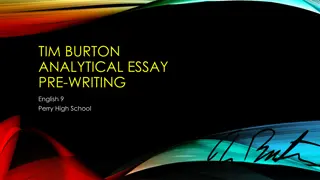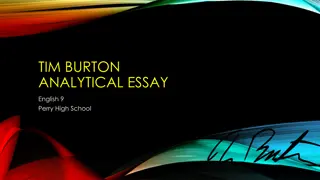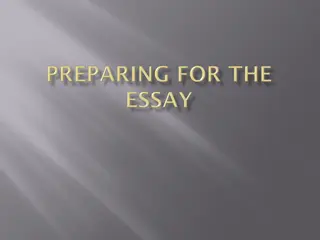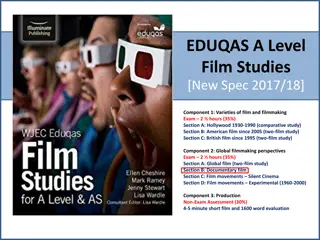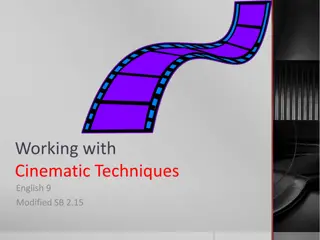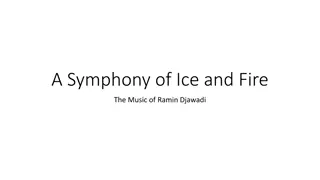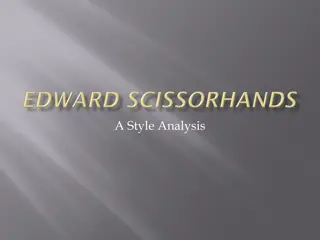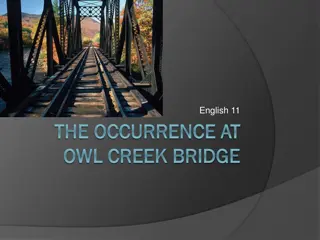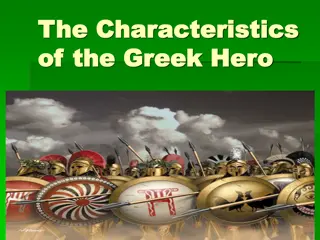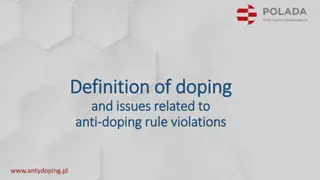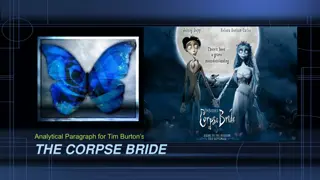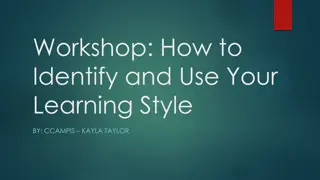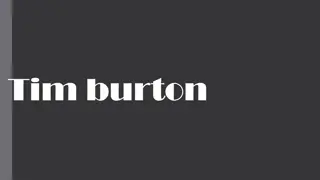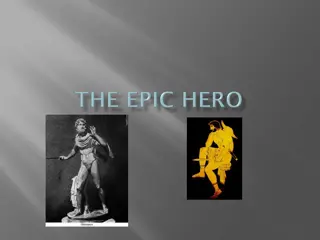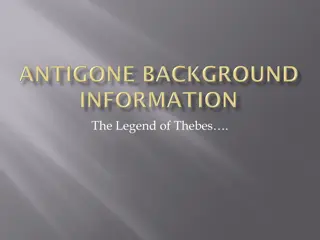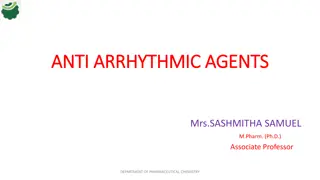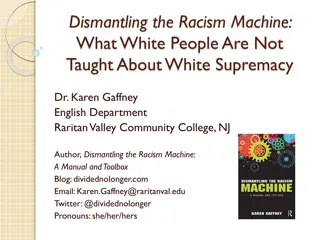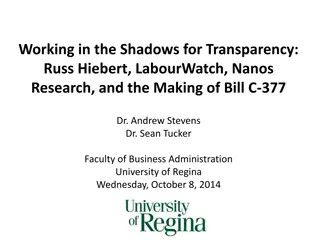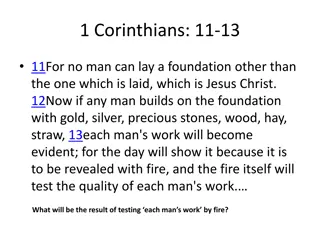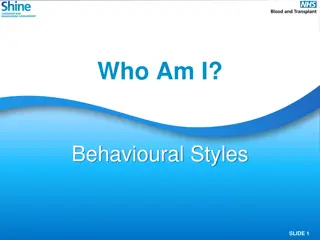Analyzing Tim Burton's Cinematic Style: The Role of Anti-Heroes in Society
Dive into Tim Burton's unique cinematic approach focusing on the portrayal of anti-heroes in society. Explore how Burton's stylistic techniques shape his argument through compelling examples from his films like "Charlie and the Chocolate Factory."
Download Presentation

Please find below an Image/Link to download the presentation.
The content on the website is provided AS IS for your information and personal use only. It may not be sold, licensed, or shared on other websites without obtaining consent from the author. Download presentation by click this link. If you encounter any issues during the download, it is possible that the publisher has removed the file from their server.
E N D
Presentation Transcript
TIM BURTON ANALYTICAL ESSAY English 9 Perry High School
PROMPT Write an essay ANALYZING the cinematic style of director Tim Burton. Focus on the ways in which the director uses stylistic techniques across films to achieve his argument on the anti-hero s role in society.
PREPARE What is an anti-hero? How do Burton s characters exemplify the concept of the anti-hero? According to Tim Burton, what is the role of the anti- hero in society?
WRITING EFFECTIVE ANALYTICAL STATEMENTS English 9 Perry High School
TIM BURTON CINEMATIC ANALYSIS: CHARLIE AND THE CHOC. FACTORY Tim Burton, in Charlie and the Chocolate Factory, uses (cinematic element) in order to (achieve what purpose). For example, (insert example from the movie here). Therefore, (explain the effect the example has on the viewer.)
TIM BURTON CINEMATIC ANALYSIS: CHARLIE AND THE CHOC. FACTORY Tim Burton, in Charlie and the Chocolate Factory, uses a close up camera angle in order to magnify the character s traits and personality.
TIM BURTON CINEMATIC ANALYSIS: CHARLIE AND THE CHOC. FACTORY Tim Burton, in Charlie and the Chocolate Factory, uses a close up camera angle in order to magnify the character s traits and personality. For example, when Augustus Gloop is being interviewed after winning a golden ticket, he can t resist eating chocolate while talking to the reporters.
TIM BURTON CINEMATIC ANALYSIS: CHARLIE AND THE CHOC. FACTORY Tim Burton, in Charlie and the Chocolate Factory, uses a close up camera angle in order to magnify the character s traits and personality. For example, when Augustus Gloop is being interviewed after winning a golden ticket, he can t resist eating chocolate while talking to the reporters. When Burton shows a close-up of Gloop s pudgy face with melted chocolate dribbling from his chin, it reinforces the notion that he is a greedy, self-absorbed, gluttonous boy. W W H
TIM BURTON CINEMATIC ANALYSIS: CHARLIE AND THE CHOC. FACTORY Tim Burton, in Charlie and the Chocolate Factory, uses low key lighting in order to create suspense or suspicion of a place or person.
TIM BURTON CINEMATIC ANALYSIS: CHARLIE AND THE CHOC. FACTORY Tim Burton, in Charlie and the Chocolate Factory, uses low key lighting in order to create suspense or suspicion of a place or person. For example, when the golden ticket holders and their families started the tour of the Wonka factory, they are guided through a long, dark, shadowy corridor that ends at a tiny door.
TIM BURTON CINEMATIC ANALYSIS: WILLY WONKA AND THE CHOC. FACTORY Tim Burton, in Charlie and the Chocolate Factory, uses low key lighting in order to create suspense or suspicion of a place or person. For example, when the golden ticket holders and their families started the tour of the Wonka factory, they are guided through a long, dark, shadowy corridor that ends at a tiny door. The low key lighting helps contribute to a dark, mysterious, and suspicious mood for the audience. It reinforces that this factory is not ordinary and it is full of mystery and fantasy. W W H
TIM BURTON CINEMATIC ANALYSIS: EDWARD SCISSORHANDS Tim Burton, in Edward Scissorhands, uses (cinematic element) in order to (achieve what purpose). For example, (insert example from the movie here). Therefore, (explain the effect the example has on the viewer.)
TIM BURTON CINEMATIC ANALYSIS: EDWARD SCISSORHANDS Tim Burton, in Edward Scissorhands, uses a high camera angle in order to portray Edward as an anti-hero.
TIM BURTON CINEMATIC ANALYSIS: EDWARD SCISSORHANDS Tim Burton, in Edward Scissorhands, uses a high camera angle in order to portray Edward as an anti-hero. For example, when Peg finds Edward in the attic of the mansion, high angle is used to make Peg seem vulnerable and in danger.
TIM BURTON CINEMATIC ANALYSIS: EDWARD SCISSORHANDS Tim Burton, in Edward Scissorhands, uses a high camera angle in order to portray Edward as an anti-hero. For example, when Peg finds Edward in the attic of the mansion, high angle is used to make Peg seem vulnerable and in danger. By making viewers worry about Peg s well-being, Burton sets up Peg as a potential victim. Edward is portrayed as threatening, and therefore, NOT heroic (an anti-hero). W W H
HOOK (ATTENTION GRABBER) Chocolate rivers, scissors for hands, and dancing skeletons this may seem like a child s midnight dream, but it s actually a description of the successful filmmaker, Tim Burton. His quirky, fantastical worlds and unlikely heroes have helped make Burton one of the world s most beloved movie-makers.
THESIS In the films Charlie and the Chocolate Factory and Edward Scissorhands, director Tim Burton uses _______________ and _________________ in order to support the argument that the anti-hero has an important role in society.
TOPIC SENTENCE (PARAGRAPH 1) In his major motion pictures, Burton uses creative lighting techniques to support the notion that the anti-hero is important in society.
ANALYTICAL STATEMENT (SEESET #1) In Charlie and the Chocolate Factory, Tim Burton uses low key lighting in order to create suspense or suspicion of a place or person. For example, when the golden ticket holders and their families started the tour of the Wonka factory, they are guided through a long, dark, shadowy corridor that ends at a tiny door. The low key lighting helps contribute to a dark, mysterious, and suspicious mood for the audience. It reinforces that this factory is not ordinary and it is full of mystery and fantasy.
ANALYTICAL STATEMENT (SEESET #2) Tim Burton, in Edward Scissorhands, uses low key lighting in order to portray Edward as an anti-hero. For example, when Peg finds Edward in the attic of the mansion, low key lighting is used to make Edward look dangerous and villainous. By making viewers worry about Peg s well-being, Burton sets up Peg as a potential victim. Edward is portrayed as threatening, and therefore, NOT heroic (an anti-hero).
CONCLUDING/TRANSITIONAL SENTENCE (BODY PARAGRAPH 1) Using creative lighting techniques is an effective method for helping the audience view Burton s anti- heroes as important to society.
CONCLUSION PARAGRAPH In Burton s films Charlie and the Chocolate Factory and Edward Scissorhands, the audience sees how he uses _______________ and _________________ in order to support the argument that the anti-hero is important in our society.
CONCLUSION PARAGRAPH CONT. When Burton uses __________ and __________, it reinforces the idea that his characters are unexpected heroes who don t fit society s ideas of a true hero. Nonetheless, the viewers still want them to succeed.
CONCLUSION PARAGRAPH CONT. Burton s unique, incredibly imaginative worlds and eccentric heroes have entertained millions of viewers everywhere.


